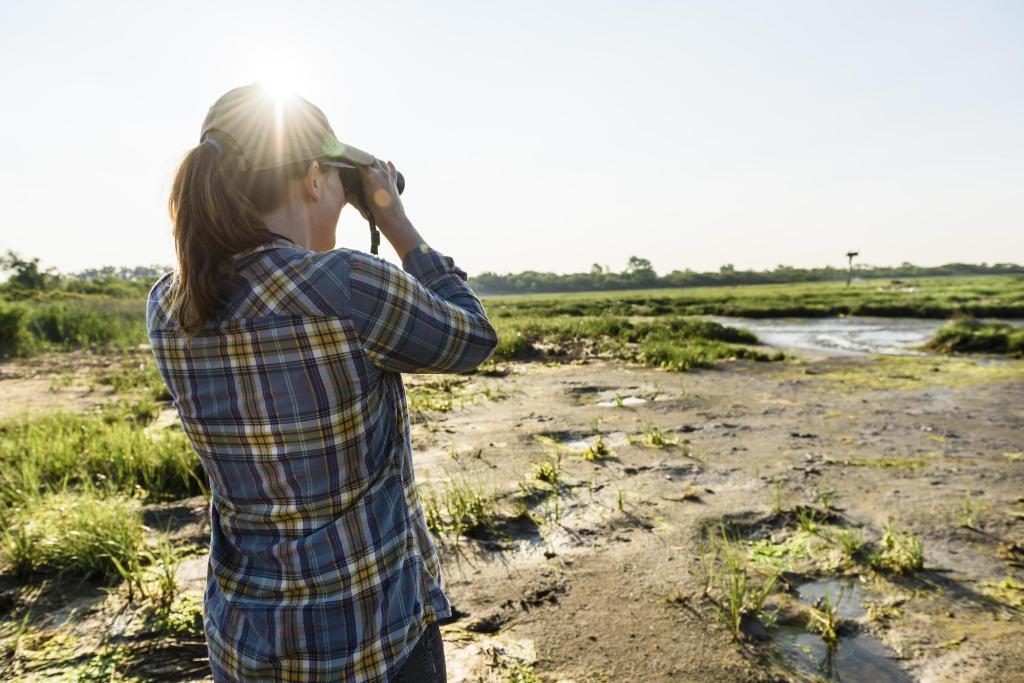The persistent gender gap in science publishing is harming conservation efforts. An analysis of papers published by Nature Conservancy scientists over 50 years finds that men continue to out-publish women. Only 36% of authors were women, and in any year women in the Global South have never comprised more than 3% of total authorships across the organization.
The Gist
The researchers examined all papers from Web of Science with at least one author from The Nature Conservancy (TNC), the world’s largest global conservation non-profit by revenue and assets. Their results were published recently in Conservation Science & Practice.
They found that only 36% of TNC authors were women. Women in the Global South were the least represented group, making up less than 2% of all total TNC authorships. For comparison, seven individual men in the Global North comprised 9% of all TNC authorships (5 times greater than all women from the Global South).
Their results also showed that just 31% of all first authorships and 24% of last authorships were women, two positions which connote greater prestige and most influence over the research focus.
Encouragingly, the number of women publishing has increased over time however, it remains well below gender parity.
The Big Picture
As one of the world’s largest conservation non-profit organizations, TNC provides a valuable case study to understand how women publish relative to men in conservation science.
“Levelling the gender gap in science publishing isn’t just about equity for women scientists,” says Robyn James, TNC’s gender & equity advisor for the Asia-Pacific region and the lead author of the paper. “Without women-led research, we’re missing out on crucial perspectives that could strengthen our conservation work and, ultimately, lead to better outcomes for nature.”
She says that a lack of diversity in research teams inevitably biases the questions that scientists investigate and the solutions they develop to conservation problems. That lack of women’s representation can also exacerbate existing gender-based inequalities wherever conservationists work.
James cites her work in the Pacific as an example: “I work in communities where women are routinely left out of decision-making on natural resources, even though those decisions directly affect their daily lives,” says James. “But men, including researchers themselves, often do not see that women are excluded even when their resources and livelihoods are at stake.”
The Takeaway
James and her co-authors recommend several actions that organizations and academic institutions can take to help counter the gender gap in science publishing:
- Ensure men collaborate and co-author with women, especially women in the Global South.
- Require men to equally share in office housekeeping, and actively encourage and resource women to have dedicated time for research and writing.
- Support women who primarily speak non-English languages to publish. Support options may include dedicated resources for English editorial and translation support.
- Offer dedicated research, mentorship, and publishing support for women throughout the entire publishing process.
- Include women who perform invisible labor, like data entry or literature review, as paper co-authors.
It requires significant and sustained investment across an organization to close equity gaps in science publishing. James says that the combination of support systems for women and mandates that require their inclusion in scientific research is part of a much-needed system-wide and cultural shift. “This isn’t a problem of women not being good enough or working hard enough,” says James.
“I am hopeful about our ongoing commitment to understanding and addressing the systems that prevent both women and people from the Global South from publishing across the sciences,” she says. “We must continue to stretch ourselves to ensure that everyone, no matter where you are located and what gender you are, has an opportunity to contribute.”




Reporting on this issue needs to include a percentage of women present in the field. I would like to see the data. Is the gender gap one of purposely ignoring the contribution of women or one of the number of women doing studies and research? As more women pursue degrees and become senior researchers, will the roles in publication be reversed?